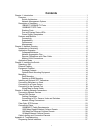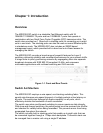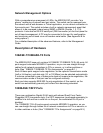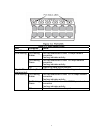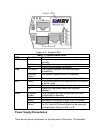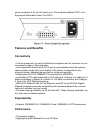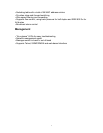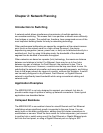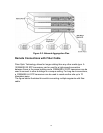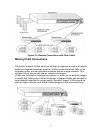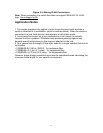2
Network Management Options
With a comprehensive arrangment of LEDs, the MR2228-S2C provides “at a
glance” monitoring of network and port status. The switch can be managed over
the network with a web browser or Telnet application, or via a direct connection to
the console port. The switch includes a built-in network management agent that
allows it to be managed in-band using SNMP or RMON (Groups 1, 2, 3, 9)
protocols. It also has an RS-232 serial port (DB-9 connector) on the front panel for
out-of-band management. A PC may be connected to this port for configuration
and monitoring out-of-band via a null-modem serial cable. (See Appendix B for
wiring options.)
For a detailed description of the advanced features, refer to the Management
Guide.
Description of Hardware
10BASE-T/100BASE-TX Ports
The MR2228-S2C base unit contains 24 10BASE-T/100BASE-TX RJ-45 ports. All
ports support automatic MDI/MDI-X operation, so you can use straight-through
cables for all network connections to PCs or servers, or to other switches or
hubs.(See “10BASE-T/100BASE-TX Pin Assignments” on page B-1.)
Each of these ports support auto-negotiation, so the optimum transmission mode
(half or full duplex), and data rate (10, or 100 Mbps) can be selected automatically.
If a device connected to one of these ports does not support auto-negotiation, the
communication mode of that port can be configured manually.
Each port also supports IEEE 802.3x auto-negotiation of flow control, so the
switch can automatically prevent port buffers from becoming saturated.
1000BASE-T/SFP Ports
These are combination Gigabit RJ-45 ports with shared Small Form Factor
Pluggable (SFP) transceiver slots. If an SFP transceiver (purchased separately) is
installed in a slot and has a valid link on the port, the associated RJ-45 port is
disabled.
The 1000BASE-T RJ-45 ports support automatic MDI/MDI-X operation, so you
can use straight-through cables for all network connections to PCs or servers, or
to other switches or hubs. (See “1000BASE-T Pin Assignments” on page B-3.)





